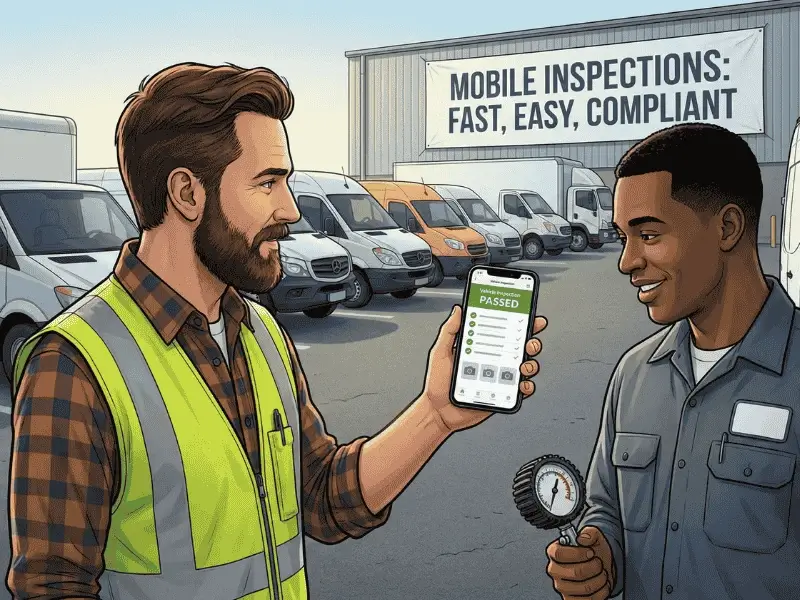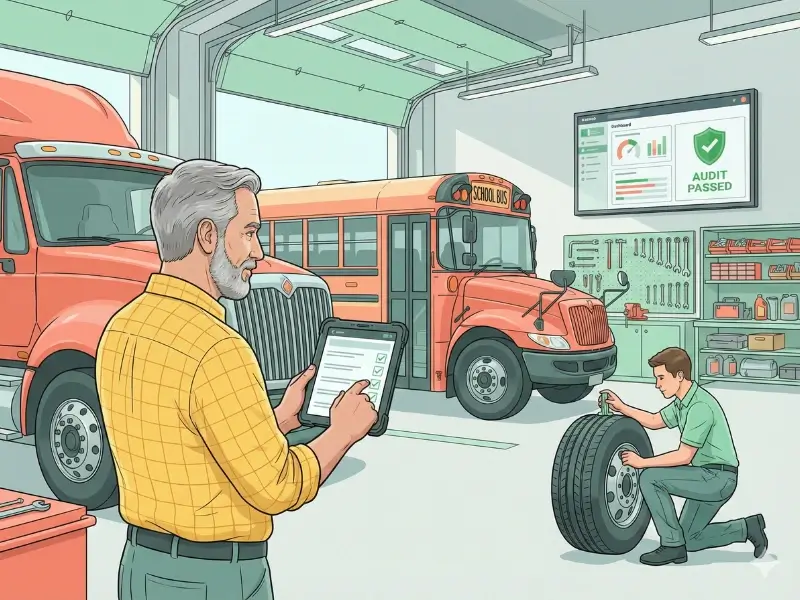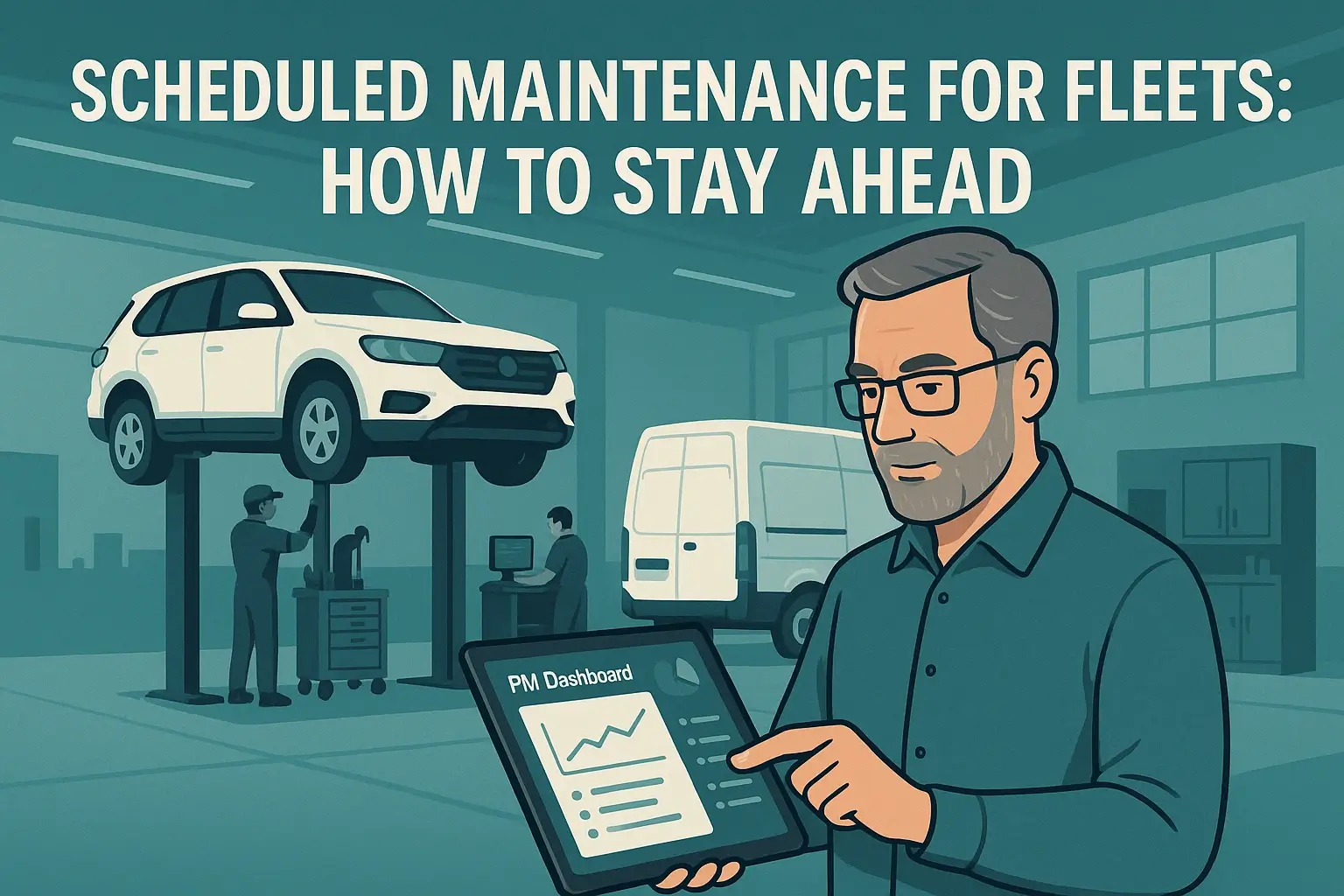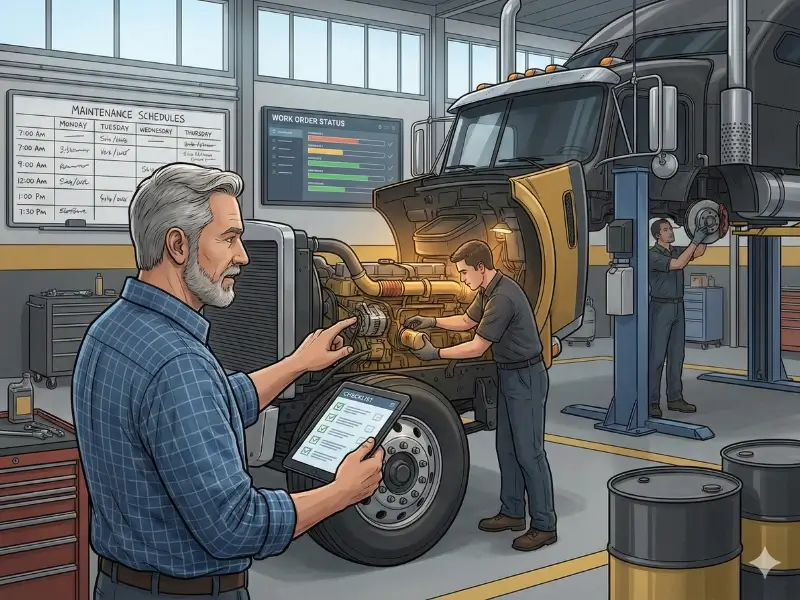Key Takeaways
What is Preventive Maintenance Inspection?
Preventive maintenance inspection refers to a systematic approach to regularly evaluate the condition of equipment, machinery, and systems. This proactive strategy involves scheduled assessments, adjustments, and replacements to mitigate the risk of sudden breakdowns and failures.
Organizations can detect and address minor issues by conducting regular inspections before they evolve into larger, costlier problems.
Difference Between PM Inspection and Other Maintenance Types
PM inspections are different from other maintenance methods like:
- Reactive Maintenance – Fixing equipment only after it breaks down.
- Predictive Maintenance – Using data and sensors to predict failures before they happen.
- Corrective Maintenance – Repairing issues found during a PM inspection.
While reactive maintenance leads to unexpected downtime, PM inspections prevent sudden failures, making operations more reliable.
Why Are PM Inspections Important?
A PM inspection is more than just a routine check—it plays a critical role in keeping equipment efficient, reducing costs, and ensuring workplace safety. Regular preventive maintenance helps businesses avoid sudden failures and costly repairs while improving overall productivity.
Key Benefits of PM Inspections
Cost Savings
Cost savings is one of the most compelling benefits of preventive maintenance inspections. While the initial investment might seem higher, it pales compared to the expenses incurred from unexpected breakdowns, repairs, and production downtime. By identifying and resolving potential issues in advance, companies can avoid costly emergency repairs and the associated production delays.
Enhanced Safety
Faulty equipment and machinery can pose serious safety risks to workers and the environment. PM inspections help ensure that equipment functions as intended, minimizing the chances of accidents and injuries. Regular vehicle checks and adjustments can identify and rectify safety hazards, creating a safer work environment overall.
Extended Equipment Lifespan
Proper maintenance can significantly extend the lifespan of equipment and machinery. Regular inspections and timely repairs or replacements prevent wear and tear from accumulating and causing irreparable damage. This ultimately reduces the need for premature replacements, leading to substantial long-term savings.
Improved Operational Efficiency
Well-maintained Equipment operates more efficiently. Preventive maintenance inspections help optimize the performance of machinery by ensuring that it works at peak levels. This leads to improved productivity, reduced energy consumption, and better efficiency.
Minimized Downtime
Unplanned equipment failures can bring production to a grinding halt and affect productivity and profitability. Regular vehicle maintenance and vehicle inspections can prevent breakdowns and thus unplanned downtime. Planned downtime for maintenance is often far less disruptive and costly than emergency shutdowns.
Data-Driven Decision Making
Modern preventive maintenance practices often involve collecting and analyzing inspection data. This data provides valuable insights into the condition of equipment, enabling informed decision-making regarding repairs, replacements, and overall maintenance strategies.
Download your FREE Preventative Maintenance Checklist!
Best Practices for Implementing Preventive Maintenance Inspections
Establish a Schedule
Develop a comprehensive maintenance schedule outlining when PM inspections will occur. Different equipment and machinery require different frequencies of review based on their usage and criticality.
Document Everything
Maintain detailed records of all preventive maintenance inspections, repairs, and maintenance activities. This documentation can serve as a reference for future reviews and provide insights into the historical performance of equipment.
Train Maintenance Teams
Ensure the PM inspection personnel are well-trained and equipped with the necessary skills and knowledge. A well-trained team can identify potential issues more effectively and perform repairs correctly.
Use Technology
Embrace technology solutions, such as Computerized Maintenance Management Systems (CMMS), to streamline the preventive maintenance process. Any best app for vehicle maintenance can help schedule, track, and manage inspections, making the process more efficient.
Prioritize Critical Equipment
Identify the most critical pieces of equipment that significantly impact production and focus on their preventive maintenance. Prioritizing critical assets ensures that resources are allocated where they are needed most.
Regularly Review and Adjust
Periodically review the effectiveness of your preventive maintenance software. Analyze the data collected, identify trends, and adjust the maintenance schedule and strategies accordingly.
13-Point Preventive Maintenance Inspections Checklist
Here's a comprehensive list of 13 essential areas to include in your preventive maintenance inspections:
- Cab Interior: The cab interior is critical to the operator's environment. During inspections, pay attention to details like registration, functioning seat belts, and other safety equipment. Evaluate the condition of the heater, lights, gauges, horn, and defroster, ensuring they are in optimal working order.
- Engine Compartment: The engine compartment is the heart of the vehicle's functionality. Inspect thoroughly for any signs of leaks and assess all fluid levels to ensure they are within recommended ranges.
- Potential Replacements: Certain components might require periodic replacement to maintain peak performance. Address these needs as necessary, including replacing air, fuel, and water filters and adding diesel conditioners. Remember to consider rust inhibitors to safeguard against corrosion.
- Cooling System: The cooling system regulates engine temperature. Check the fluid level and perform a pressure test if it's low. Inspect hoses and belts for any signs of wear and tear, and ensure the protection level of the cooling system is up to par.
- Electrical System: The electrical system keeps the vehicle's critical functions running smoothly. Inspect battery mounting, terminals, and cables, ensuring they are secure and corrosion-free. Examine all exterior lights to guarantee proper functionality, and assess the alternative starter, bolts, and mounting for any issues.
- Under Chassis: The under-chassis components bear the brunt of the vehicle's movement. Inspect the drive line, suspension, and steering components for wear or damage. Check the exhaust system for both conditions and leaks. As needed, apply lubrication to ensure smooth operation.
- Oil System: The oil system is the engine's lifeblood. Regularly change the oil and oil filter according to the manufacturer's recommendations. This is vital for maintaining optimal engine performance and longevity.
- Brakes: Brake systems are paramount for safe operation. Inspect both the service and parking brake systems to ensure they are in proper working condition. Address any concerns promptly to prevent compromised braking performance.
- Tires: Tires are the vehicle's point of contact with the road. Regularly inspect tire condition and inflation levels, including the spare tire. Adequate tire maintenance contributes to safer handling and extended tire lifespan.
- Miscellaneous: This catch-all category encompasses several essential aspects. Inspect the vehicle's body and glass for any signs of damage and make a note of them. A detailed inspection of the body and glass ensures that any required repairs are addressed promptly.
- Fluid Contamination Checks: Regularly inspect fluids such as oil, coolant, and hydraulic fluid for signs of contamination, which can negatively impact equipment performance. Look for discoloration, particles, or unusual odors, and address any issues promptly.
- Lubrication Points: Identify and lubricate all designated points as per the manufacturer's recommendations. Proper lubrication reduces friction, minimizes wear and tear, and ensures the smooth operation of moving parts.
- Calibration and Adjustment: Check and calibrate instruments, controls, and sensors to ensure accurate readings and optimal performance. Make necessary adjustments to maintain precision and efficiency in your equipment's operations.
Related Posts
- Maximizing Vehicle Lifespan: A Cost-Effective Approach to Fleet Maintenance
- Planning Preventive Maintenance: A Simple Guide to Keep Your Assets in Top Shape
- A Practical Guide to Using Fleet Maintenance Metrics
Final Thoughts
Preventive maintenance inspections are the cornerstone of efficient and sustainable operations across industries. By identifying potential issues before they snowball into major problems, organizations can ensure cost savings, enhanced safety, and extended equipment lifespans. Implementing preventive inspections has become more manageable and effective with technology and well-defined processes.
The 13 areas outlined above are a comprehensive guide for what to include in preventive maintenance inspections. When these inspections are conducted at established intervals and carried out by the appropriate personnel, they contribute to a well-rounded preventive maintenance program that guarantees optimal performance and longevity of machinery and equipment.



.png)








.png)


.png)









